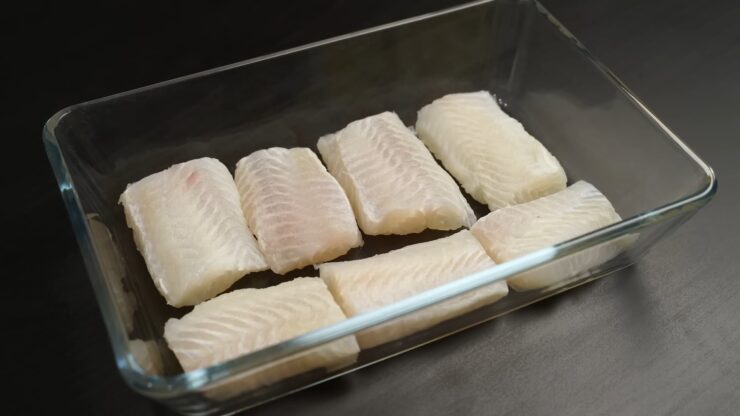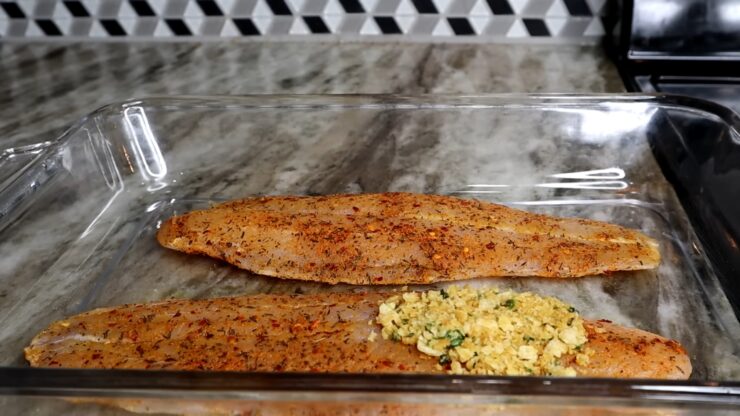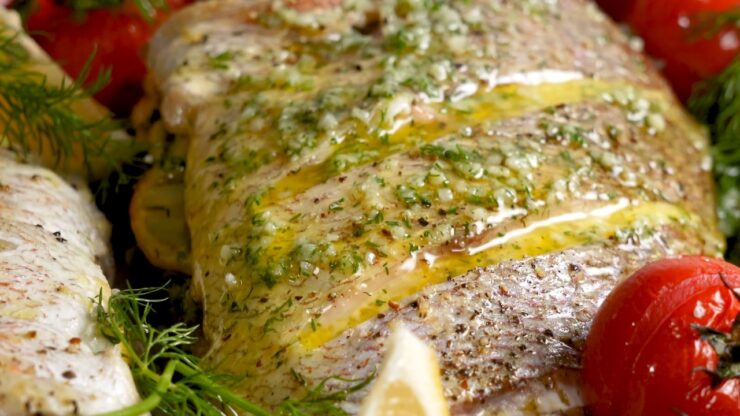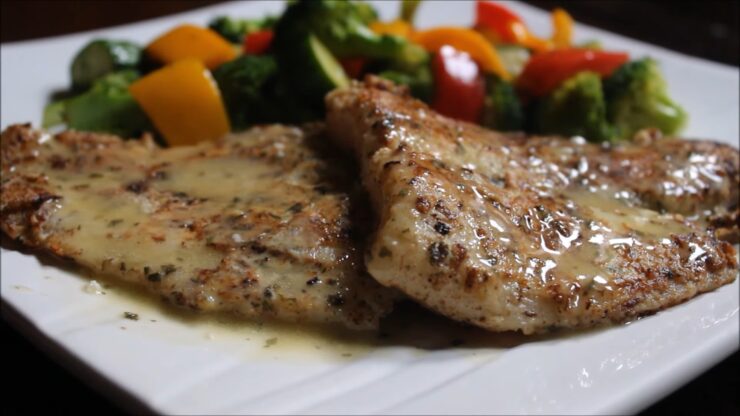When preparing delicious fish fillets, your chosen cooking method can make all the difference in taste and texture. Two popular options are baking and grilling. Each method offers a unique set of benefits.
In this guide, we’ll explore the characteristics of both to help you decide which one suits your culinary goals best.
The Versatility of Fish Fillets

Before diving into the cooking methods, let’s highlight the star of the show: the fish fillet. These delicate cuts of fish are not only prized for their mild, fresh taste but also for their nutritional value.
Fish fillets are a healthy choice for any meal, rich in lean protein, essential omega-3 fatty acids and a wealth of vitamins and minerals.
Baking Fish Fillets: A Gentle Approach
Baking, a method that uses dry heat in the oven, is often considered a gentle approach to cooking fish fillets. Here’s why it’s a fantastic option:
- Even cooking – Baking ensures even cooking throughout the fillet, maintaining its tenderness and moisture.
- Simple preparation – Season the fillet, place it in a baking dish and let the oven do the work.
- Versatility – You can add various herbs, spices and vegetables to enhance flavour and create diverse dishes.
- Perfect for – Mild and flaky fish like cod, haddock or tilapia.
Grilling Fish Fillets: A Taste of the Outdoors

Grilling fish fillets, on the other hand, imparts a unique flavour profile and offers several advantages:
- Distinct flavour – Grilling adds a smoky, charred flavour that’s hard to replicate with other methods.
- Quick cooking – Fish fillets cook rapidly on a hot grill, making it a convenient choice for busy weeknights.
- Crispy skin – For skin-on fillets, grilling achieves a crispy skin that many find appealing.
- Perfect for – Robust fish like salmon, swordfish or tuna.
Considerations for Both Methods
Both baking and grilling can produce delectable fish fillet dishes, but a few key considerations can help you choose which method to use:
- Fillet thickness – Thicker fillets are better suited for grilling, as they can handle the high heat without drying out. Thinner fillets may be better baked to ensure they stay moist.
- Desired flavours – Grilling adds a unique smoky taste, while baking allows you to experiment with a broader range of seasonings and sauces.
- Cooking time – Grilling is usually faster, making it a good option for those short on time. Baking may require a bit more patience.
- Presentation – Consider the visual appeal of your dish. Grilled fillets often have those coveted grill marks, while baked fillets may retain a more classic appearance.
Comparison of Baking and Grilling for Fish Fillet

When it comes to cooking fish fillet, two popular methods stand out: baking and grilling. Each method has its own unique set of advantages and characteristics.
Taste and Texture
The taste and texture of your fish fillet can significantly impact your dining experience. Both baking and grilling offer distinct results in this aspect.
- Baking: Baking is known for its ability to retain moisture in fish fillets. When you bake a fish fillet, it cooks gently in its juices, resulting in a tender and succulent interior. However, the texture tends to be softer and less crispy compared to grilling. Baking is ideal for those who prefer a milder and more delicate flavor profile in their fish.
- Grilling: Grilling, on the other hand, imparts a unique smoky flavor and achieves a delightful crispy exterior. The direct exposure to the grill’s heat source caramelizes the surface of the fish, creating a contrast between the crunchy outer layer and the moist interior. This method is favored by those who enjoy a bolder and slightly charred taste.
Health Considerations

Health-conscious individuals often consider the nutritional aspects of their cooking methods. Let’s examine how baking and grilling fare in terms of health.
- Baking: Baking is often regarded as a healthier option due to its minimal use of added fats. You can control the amount of oil or butter used to coat the fish and baking sheet. This method retains the natural flavors of the fish without introducing excessive calories. It is suitable for those aiming to maintain a low-fat diet.
- Grilling: Grilling also has its health benefits. The fat in the fish drips away as it cooks on the grill grates, reducing the overall calorie content. Additionally, the smoky flavor from grilling can enhance the taste without the need for excessive seasoning. Grilling is an excellent choice for those looking for a flavorful yet calorie-conscious meal.
For a heart-healthy alternative, individuals can consider using olive oil or avocado oil as a substitute for grapeseed oil in their marinades, adding a unique twist to the grilled dish.
Convenience
Convenience in cooking can be a deciding factor for many individuals. Let’s explore how baking and grilling measure up in terms of ease of preparation and cooking.
- Baking: Baking is a relatively hands-off method. Once you’ve seasoned your fish fillet and placed it in the oven, you can attend to other tasks while it cooks. This hands-off approach can be advantageous if you have multiple dishes to prepare simultaneously or if you prefer a more relaxed cooking experience.
- Grilling: Grilling demands more active involvement. You need to monitor the grill’s temperature, turn the fillet as needed, and ensure it doesn’t overcook. While it may require more attention, grilling offers the satisfaction of outdoor cooking and a more interactive culinary experience.
Versatility

The versatility of cooking methods can determine how well they adapt to different types of fish and flavor profiles. Let’s see how baking and grilling compare in this aspect.
- Baking: It is a versatile method that works well with a wide range of varieties. It’s particularly suited for delicate fish such as cod, haddock, and tilapia, as it keeps them moist and tender. Baking allows you to experiment with various seasonings, herbs, and citrus for flavor enhancement.
- Grilling: It is equally versatile and is known for its ability to enhance the flavors of robust fish like salmon, swordfish, and tuna. The smokiness from the grill complements stronger-flavored fish exceptionally well. You can also get creative with marinades and wood chips to further customize the taste.
The Choice is Yours
In the delightful world of culinary exploration, there’s no one-size-fits-all answer. Whether you prefer the subtle and moist qualities of baked fish fillets or the bold, smoky flavor of grilled ones, your choice depends on personal preference and the variant you’re working with.
When deciding between baking and grilling, it ultimately comes down to your desired flavors and the most appealing texture. You can experiment with both methods and even combine them, using baking to prep your fillet and finishing it on the grill to add those delightful grill marks and smoky notes.
Whether baking or grilling, you’re in for a delicious seafood experience that will delight your taste buds.

